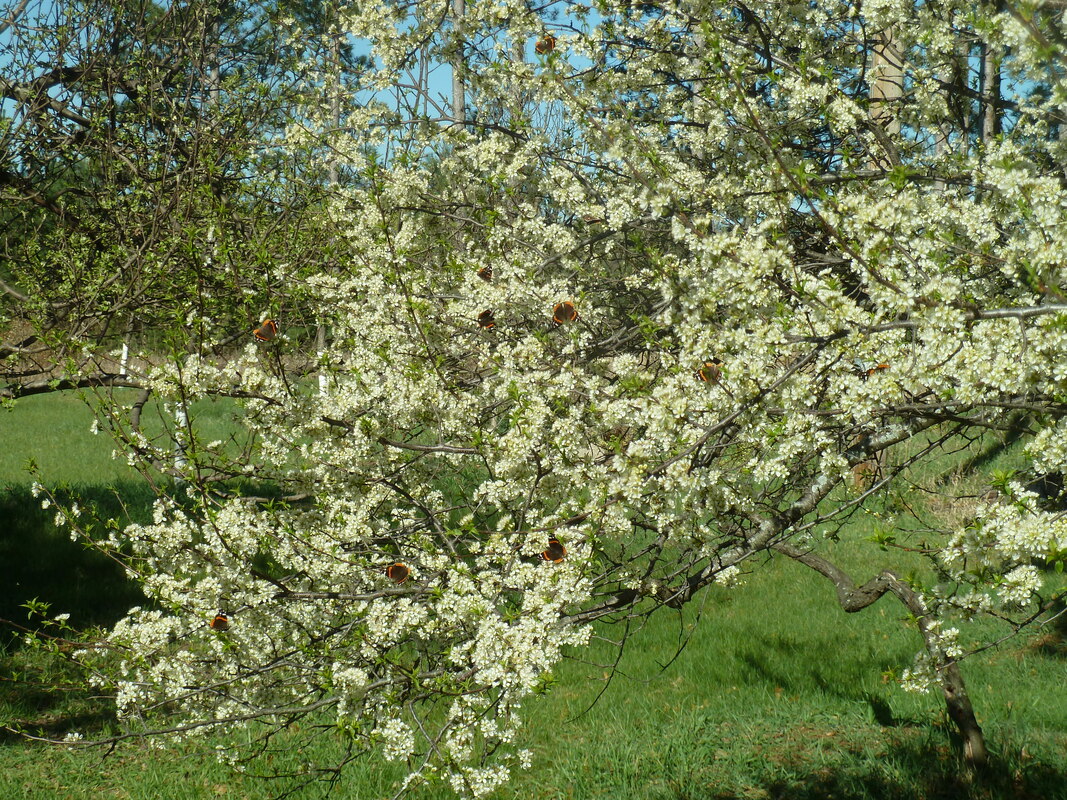
Bee Culture Magazine recently ran an article about the importance of hedgerows and trees—still an agricultural norm as late as the early 1900s—for providing pollinator forage, as well as nesting and overwintering habitat. The Xerces Society wrote this article about the benefits of hedgerows in farm landscapes in 2016.
The Arbor Day Foundation’s Tree City USA program was launched in 1976 to raise awareness of the importance of urban tree canopies and create local systems for maintaining them. During its formation in 2011, Bee City USA drew inspiration from Tree City USA, reasoning that if the Tree City USA program could help urban and suburban areas institutionalize efforts to enhance urban tree canopies, the same organizing principles could be applied to reversing pollinator declines in those areas.
Scion Foltz Jordan enjoys juneberries from a native hedgerow at Keepsake Farm in Minnesota. Photo: Sarah Foltz Jordan/Xerces Society
Most people associate trees with birds, but Arbor Day is also an excellent occasion for educating your community about the butterfly and moth caterpillars their tree canopy supports, and the vital role most adult lepidoptera play not only in pollination, but also the role they play during their caterpillar stage in feeding ninety per cent of young land birds. Tallamy said, “A single clutch of chickadees will eat 6000-9000 caterpillars before they leave the nest.” Tallamy collaborated with the National Wildlife Federation to create a Native Plant Finder that links plants in your zip code to the butterfly and moth caterpillars they support.
Yellow-faced bumble bee (Bombus vosnesenskii) on big leaf maple (Acer macrophyllum) Photo: Kitty Bolte/Xerces Society
When thinking about planting trees for bees it is also good to think about how managing trees can affect bees, in particular insecticide treatments. A major Bee City USA commitment for certification is administering an informed integrated pest management program. The goal is to prevent pest problems, but when they arise, to address them in a way that least harms pollinators. The now infamous massive bumble bee kill caused by spraying blooming linden trees in a retail parking lot in Wilsonville, Oregon, in 2013 is a sobering reminder of how tree treatments impact pollinators. The silver lining to this incident is that it led to a ban on treating linden trees with several neonicotinoid products in Oregon and spurred new pest management policies and practices in many cities across the nation. Wilsonville even became a Bee City USA affiliate in 2017!
Author’s Note: Douglas Tallamy is a member of Bee City USA’s Science Advisory Board.




